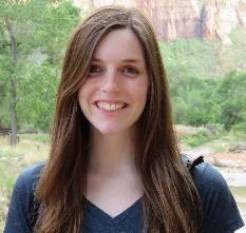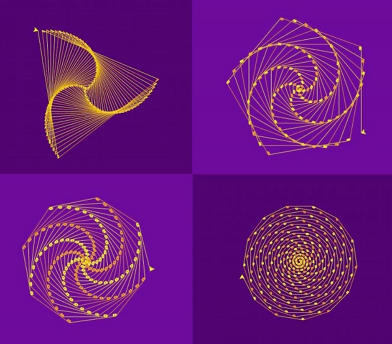Meet Robin Belton
PhD Candidate from the Department of Mathematical Sciences

Shape and geometry are all around us, and you might not even recognize it. In pictures, we look for recognizing faces. In music, loops bring the music back to where it started. GPS trajectories can be used to detect traffic patterns. What underlies all of these examples is the mathematical field of Topological and Geometric Data Analysis (TGDA). My research concerns how to extract this shape so that we can use mathematical and statistical tools to understand it better. In particular, I study mathematical theory in TGDA motivated by applications in pathology using images and music.
Currently, pathologists use images of prostate cancer to classify the severity of a patient’s cancer. They look at size, shape, and distribution of glands to classify the severity of the prostate cancer. Aha! These features are, in fact, the the topological and geometric features we study in mathematics. We could use TGDA to work towards consistent diagnosis and prognosis of prostate cancer that will hopefully eliminate the inconsistencies that sometimes arise when pathologists diagnose patients (see "Gleason group concordance between biopsy and radical prostatectomy specimens" by Sue M. Evans, Varuni Patabendi Bandarage, Caroline Kronborg, Arul Earnest, Jeremy Millar, and David Clouston, in Prostate International). Some of the TGDA methods we are working on focus on measuring distances between topological and geometric features in different images. But in the same way that you can’t just use a ruler and a map to measure the distance of a hike that goes over mountains and along creeks because the distance hiked isn’t a straight-line distance, it takes a new kind of distance measurement to measure the important distances in cancer cell images. My research focuses on developing and understanding a useful distance measure in these images.
I also have the opportunity to work with and mentor undergraduate students in my research. In another project, I am working with two undergraduate students at MSU and two faculty mentors to construct a method to extract melodic and harmonic features of songs. Understanding how to extract musical features in a consistent manner can help categorize and cluster music, potentially leading to automated methods for creating musical playlists. Since many songs have repetitive motifs, there is a natural circular form to songs. We use TGDA to detect this circular shape and various musical features.
My passion for TGDA stemmed out of wonderful past experiences on being involved in projects throughout my undergraduate and early graduate mathematics career. While earning my B.A. in Mathematics from Kenyon College, I worked on projects residing in medical imaging and bioinformatics that resulted in two papers. Most recently, my colleagues in the Computational Topology and Geometry (CompTaG) group at MSU published a result on shape reconstruction that appeared in the Canadian Conference on Computational Geometry

